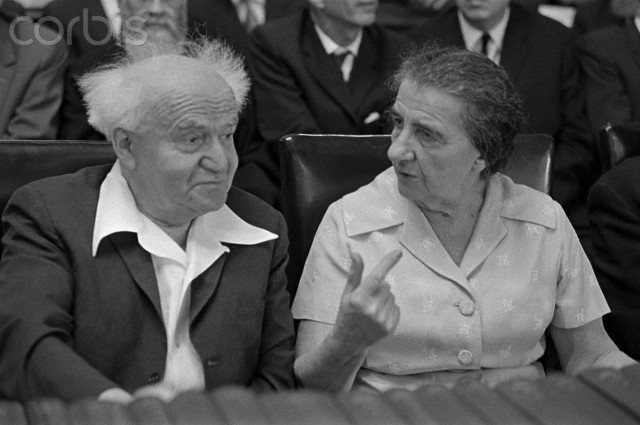
The following data was compiled from a PBS documentary:
1969 – 1970 (War of Attrition)
“In March 1969, Nasser announced that the cease-fire of June 1967 was null and void, and the “War of Attrition” was officially launched. Nasser believed that he could inflict such a heavy toll [given the wide disparity in the populations of Israel and Egypt, Israel could not afford as many casualties as the Egyptians] that the Israelis would retreat back into the Sinai, and/or that they would become more amenable to a political solution on Egypt’s terms…In August 1970, a cease fire along the canal came into effect.”
1970 Black September
“In Jordan the Palestinian guerrilla organizations created a state within a state that posed a challenge to the rule of King Hussein. The king ordered his army to disarm and break the power of these organizations. In the ensuing civil war thousands of Palestinians were killed, and many more left the country. At the height of the crisis, Syrian forces invaded Jordan in what looked like a bid to help the Palestinians overthrow the monarchy…Jordan’s army went into action against the Syrian invaders. The crisis ended with a Palestinian defeat, a Syrian retreat, and King Hussein sitting firmly on his throne in Amman.”

1970 – 1971
“Following the showdown with Jordan’s King Hussein in 1970 and 1971, and their expulsion from Jordan, the PLO (Palestine Liberation Organization) leaders and many PLO fighters, eventually numbering 15,000, moved to Lebanon.”
1973 Yom Kipur War and UN Resolution 338
“On October 6, 1973 the Egyptian Army launched a sudden attack upon the Israeli forces on the east bank of the Suez Canal; at the same moment, and by agreement, the Syrian army attacks the Israelis from the Golan Heights. In the first rush of fighting, the Egyptian army succeeded in crossing the canal and establishing a bridgehead, and the Syrians occupied part of the Golan Heights; weapons supplied by the Russians enabled them to neutralize the Israeli air force, which had won the victory of 1967. In the next few days, however, the military tide turned. Israeli forces crossed the canal and established their own bridgehead on the west bank (of the Suez Canal) and drove the Syrians back towards Damascus.”

A Soviet- American cease- fire proposal was approved by the United Nations On October 22, but violations by both sides resulted in the continuation of hostilities and in the surrounding and trapping of the Egyptian Third Army in the western Sinai. After Soviet threats to intercede, and an American military alert — just short of a nuclear alert — a second cease-fire was accepted by both parties on October 24, with Israel the obvious military victor.”
1974 January
“Henry Kissinger (U.S. Secretary of State) persuaded Egypt and Israel to sign a disengagement accord, whereby Israel withdrew from the western bank of the Suez Canal, to about twenty miles from the east bank of the canal. Egypt agreed to a major reduction of troops east of Suez, the establishemtn of a U.N.-patrolled buffer zone, defensive missile emplacemetns only west of Suez, and the allowing of nonmilitary Israeli shipping through the canal (though not in Israeli vessels).”

1974
“Henry Kissinger achieved a disengagement accord between Israel and Syria regarding the Golan Heights. Israel agreed to withdraw from some occupied territory in the Heights in return for the establishment of a U.N. buffer zone and defensive Arab missile placements. President Hafez al-Assad of Syria also agreed in a private memorandum to prevent any Palestinian terrorist groups from launching attacks from Syria. In return, the United States resumed diplomatic relations with Syria.”

“The Arab League, meeting at Rabat in 1974, recognized the PLO (Palestine Liberation Organization) as the ‘sole, legitimate representative of the Palestinian people,’ undermining the role of King Hussein and his ability to speak for the Palestinians as envisaged by U.N. resolutions. King Hussein agreed to honor the PLO’s claim to negotiate for the Palestinians (and was rewarded with an annual $300-million grant for four years from the Arab League). He further stated that it was ‘totally inconceivable’ that Jordan and a Palestinian entity could form a federation — a suggestion he had floated earlier. Perhaps the real significance of the Rabat summit was that this decision meant that Hussein was forced to acknowledge Palestinian rights to what he had lost physically to the Israelis in 1967. It was a diplomatic triumph for the PLO that repaid the defeat of Black September in 1970. The Rabat decision also weakened the American position. Kissinger agreed with the Israelis that it was preferable to negotiate with Hussein rather than with the PLO.”

MARCH 1978
“In the early 1970s, tension along the Israel-Lebanon border increased, especially after the relocation of Palestinian armed elements from Jordan to Lebanon. Palestinian commando operations against Israel and Israeli reprisals against Palestinian bases in Lebanon intensified. On March 11, 1978, a commando attack in Israel resulted in many dead and wounded among the Israeli population; the Palestine Liberation Organization (PLO) claimed responsibility for that raid. In response, Israeli forces invaded Lebanon on the night of March 14, 15, 1978, and in a few days occupied the entire southern part of the country except for the city of Tyre and its surrounding area. On March 15, 1978, the Lebanese Government submitted a strong protest to the (U.N.) Security Council against the Israeli invasion, stating that it had no connection with the Palestinian commando operation. On March 19, 1978, the Council adopted resolutions 425 (1978) and 426 (1978), in which it called upon Israel immediately to cease its military action and withdraw its forces from all Lebanese territory. It also decided on the immediate establishment of the United Nations Interim Force in Lebanon (UNIFIL). The first UNIFIL troops arrived in the area on March 23,1978.”

1979 – 1982 Israel-Egypt Treaty of Peace
“The Sinai Peninsula remained in Israeli hands until, in 1979, a peace agreement was signed between Israel and Egypt- the first with any Arab country — under the terms of which peace and normal diplomatic relations were established between the two states, and Israeli forces withdrew in agreed stages to the old, international frontier between mandatory Palestine and the Kingdom of Egypt.”
″With Egypt sidelined by the provisions of its treaty with Israel, the Begin government (Israel) was able to plan a major assault against the PLO in Lebanon relatively untroubled by the risk of an escalation into general war (with the surrounding Arab countries).”
1982 Israel-Lebanon War
“Israel invaded Lebanon in June 6, 1982. The invasion culminated in a long siege of the western part of Beirut, mainly inhabited by Muslims and dominated by the PLO. The siege ended with an agreement, negotiated through the U.S. government, by which the PLO would evacuate west Beirut.”

″The PLO military infrastructure in southern Lebanon was destroyed, and the organization was driven out of Beirut (September 2, 1982). Many PLO fighters were killed, and it lost most of its heavy equipment and ammunition stockpiles. Its headquarters was reestablished in faraway Tunisia, and its military units were dispersed in camps around the Middle East and North Africa, no longer posing a threat along or near Israel’s borders. The PLO and Arafat emerged from the fray considerably weakened.”
1983 – 1985
“On 17 May 1983 Israel and Lebanon signed an agreement that formally terminated the state of war and recognized the international border between them as inviolable. The parties undertook to prevent the use of one country’s territory for terrorist activity against the other country. Israel was to withdraw its forces to a distance of forty to forty-five kilometers from the international border to an area defined as a ‘security zone.’ The area north of the security zone was to be under the control of the United Nations Interim Force in Lebanon (UNIFIL)…There was one inherent flaw in the agreement: it was conditional on Syria’s withdrawing its forces from Lebanon, and Syria did not oblige…The withdrawal from Lebanon was carried out in stages between February and June (1985). The bulk of the troops returned to their bases inside Israel. Small forces remained in the security zone and coordinated their activities with the SLA (South Lebanon Army).”

1987 First Palestinian Intifada
“The intifada erupted on 9 December 1987, seventy years to the day from Allenby’s (British Commander of the Egyptian Expeditionary Force WWI) entry into Jerusalem. Triggered by an incident in Gaza, the uprising was the product of an accumulation of Palestinian tensions and grievances…
In mid-January the intifada broke out in the heart of Arab Jerusalem itself, as Israeli security forces used tear gas around the two especially sacred mosques in the Haram al-Sharif, trying to disperse Palestinian demonstrators. Accustomed to thinking of Jerusalem and its Arab population as an integral part of Israel, Israelis were shocked by the solidarity with the intifada being demonstrated in East Jerusalem.”

“The Intifada ended in a stalemate, with the Palestinians unable to eject the Israelis from the territories and the Israelis unable to stop the violence. That made the occupation increasingly uncomfortable. As a result, both sides soon fundamentally revised their policies: Within months the P.L.O. agreed to recognize and make peace with Israel, and to establish a self-governing entity in a small part of Palestine. And Israel, some months later, agreed to recognize the P.L.O. and to evacuate much if not most of the West Bank and Gaza Strip.
In addition, the United States was to recognize the P.L.O. and reopen its dialogue with it, and Jordan finally severed all administrative links with the West Bank. Ultimately, the result of the Intifada was a basic restructuring of geopolitical realities in the region, one of which was the start of the emergence of a Palestinian state.”

1988
“On July 31, 1988, evidently despairing of success in setting up an international conference, perhaps seeing in the Intifada a threat to his own kingdom, and realizing that, indeed, the Palestinians, especially the younger generation, would never accept him as their spokesperson, King Hussein of Jordan renounced his claim to the West Bank, which in effect reversed the annexation decision made in 1950.”
″In a somber broadcast, King Hussein announced that Jordan was severing its ‘administrative and judicial’ links with the West Bank, ‘in deference to the will of the PLO’ — Jordan was washing its hands of the future of the territory and its inhabitants.”
“On November 15, 1988, at the nineteenth meeting of the Palestine National Council (PNC), considered by the PLO to be its parliament in exile, the PNC proclaimed — by a vote of 253 to 46 with 10 abstentions — the establishment of an independent Palestinian state.”
Reblogged this on It Is What It Is and commented:
Israel-Palestine conflict …. we continue!!
LikeLike
GRAZIE MILLE!!! As always, thank you for your support and for this reblog. Today, I and my daughter went to see the movie, “He Called Me Malala” and we enjoyed it very much.Thanks for the recommendation.
LikeLiked by 1 person
Hugs!! Most welcome …. Awesome!! Great movie. Glad you liked it!!
LikeLike
Reblogged this on The Militant Negro™.
LikeLike
GRAZIE MILLE!!! Thanks a million for your continuous support and for this reblog.
LikeLiked by 1 person
My pleasure.
LikeLike
This was one of the most comprehensive I have read. Thank you.
LikeLike
I appreciate your supportive feedback on this series. Thank you!
LikeLike